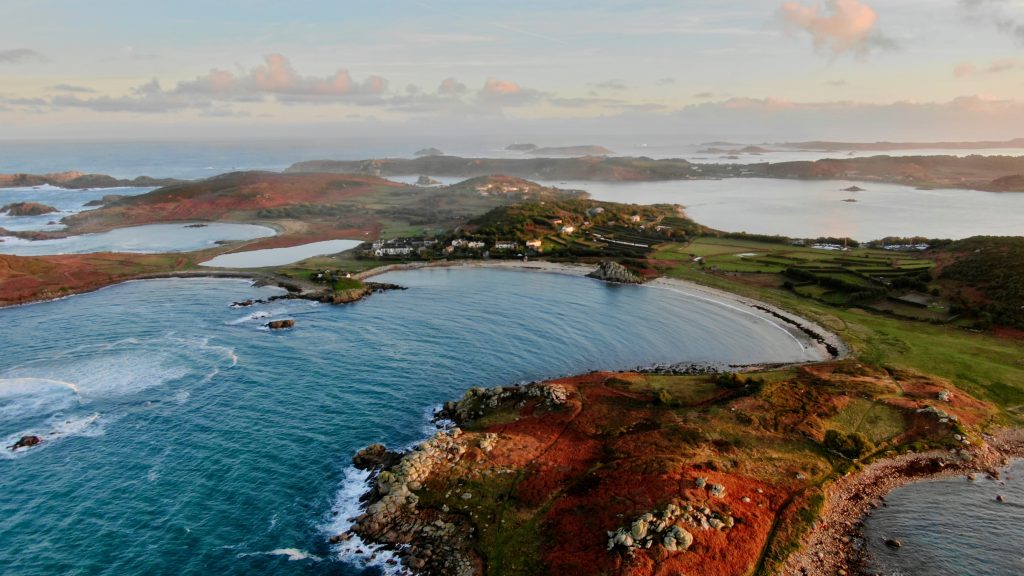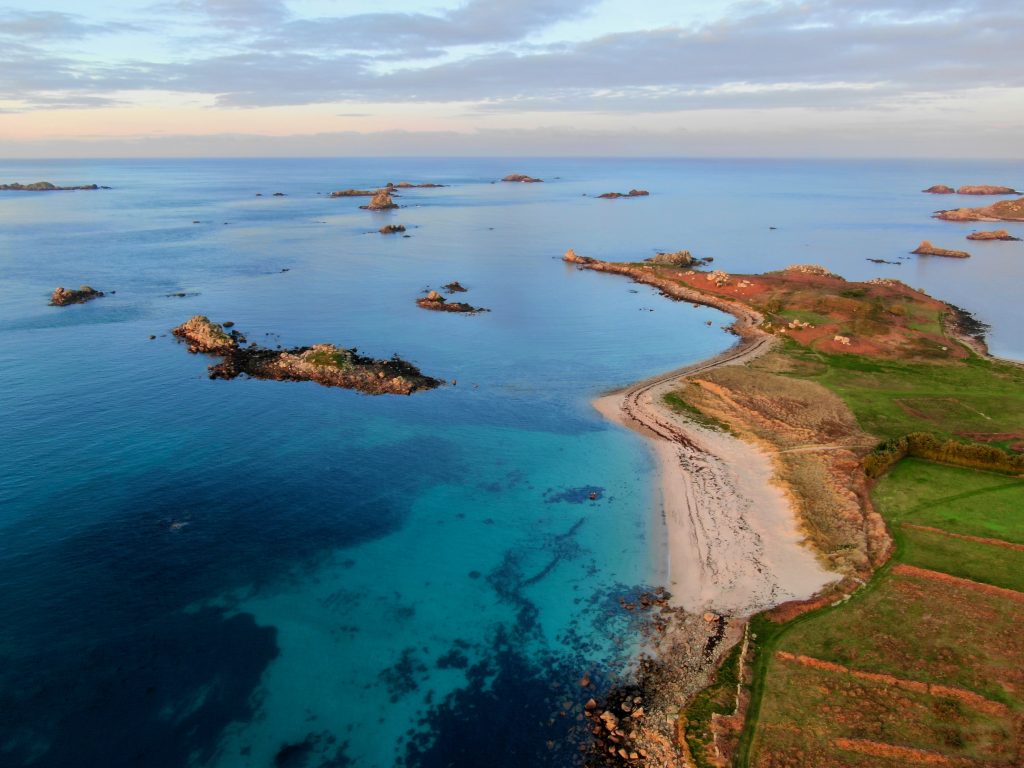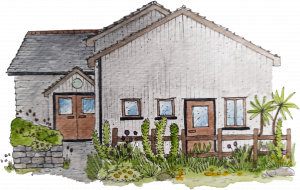Let us show you around

Depending on the state of the tide, you will arrive on Bryher at either Bar or Church Quay. The jetty at Bar was built by Anneka Rice and her team on the Challenge Anneka television programme in response to a very real need for a low tide access point. Church Quay is used at high tide.
Both were widened and extended in 2007 by the Duchy of Cornwall as part of a programme of improvements across the islands.
If you leave the beach at Bar and turn right through the boatyard and right again following the path heading north to the coast here are some of the points of interest you will come across…
To your left is Watch Hill – the highest point on Bryher. You will find a pilot lookout here. It used to be manned by men keeping watch for ships on the horizon. The hike to the top is definitely worth it for the breathtaking views across the islands.
As you look up the Tresco Channel you will see Hangman’s island which is said to have been used during the Civil War by Admiral Blake as an execution point. Others report that the name derives from the Cornish “an men” meaning the rock.
On Shipman Head Down you can find one of the largest Bronze Age burial sites in north western Europe. For a long time no one knew who was buried there and many thought that Venetian royalty came to Scilly to be buried as they thought it was the end of the world. In reality, local people would have been buried here as they favoured high points where they believed the dead could look over the living.
On top of Shipman Head Down you will see boundary markers for burial chambers. Most of these burial chambers have now collapsed.
Shipman Head Down is a great vantage point for wave watching on a blustery day. It faces the full force of the Atlantic Ocean and it’s easy to imagine how so many ships were wrecked here.

To the north of Popplestones you will find the longest cave
in Scilly. Its opening is very narrow at only 4-5ft wide and can only be accessed on a very big tide though we don’t recommend venturing down!
Great Pool was formed by people digging for peat. A leat was cut in to ensure there was a regular influx of fresh sea water to prevent it from forming into a stagnant swamp.
At the bottom of Gweal Hill there is a fresh water well. You can find it in the right hand corner of the bottom field. You can also see the remains of an old house here.

As you approach Richard Pearce’s Golden Eagle Studio (originally the building that housed the Golden Eagle gig- now on St Mary’s) you can see the walls of the shed for the gig called the Czar (now on Tresco). It had a thatched roof which was unusual for gig sheds of the time.If you walk to the right around Heathy Hill through the fields you will notice that the path turns sharply to the left then right as you come out of the second field. The path turns to go around the walls of a kelp pit. Most pits were erected in the sand at the top of the beach but this one was different as its walls were lined with stones so it could be used again and again.
As you continue around Heathy Hill past Droppy Nose Point you will see a series of big boulders. These boulders were positioned to form a ‘castle’ as a means of defence against the Vikings.
Stony Par is a great sight for spotting seals from the shore. Look out for their dark grey heads bobbing out of the water.
Rushy Bay with its fine white sands and sheltered aspect is ideal for swimming. Throughout March, April and May the very rare dwarf pansy (viola kitaibeliana) grows in the sandy turf behind the beach. Seekers of this elusive flower can be seen on hands and knees in their quest to find this miniature botanical treasure
At Works Point you can see what is left of a Cromwellian Battery. It was built at the same time as the battery at Carn Near on Tresco to defend the land of Tresco and Bryher from attack.
To the west of the top of Samson Hill you can find a burial chamber. The vantage point at the top of Samson Hill is a good place to look down on Green Bay and at low tides the remaining walls of the old field systems can be clearly seen.

At Green Bay you will find a traditional admiralty pattern anchor. This is believed to have come from the floating maintenance dock which was based at the Royal Navy flying-boat station on Tresco during the First World War. The floating dock came ashore on Green Bay and remains can still be seen amongst the rocks on the beach.

Our Community Centre was rebuilt in 2009. This was the site of Bryher school until the early 1970s. The school closed due to a decline in pupil numbers and changes to the education system. Bryher children now take a daily boat trip to attend the primary school base on Tresco.
If you walk from the Community Centre up Timmy’s Hill to the west point you will find the oldest pilot lookout in Scilly.
The Anglican Church of All Saints was built in the 1750s. It is home to beautifully crafted stained glass windows made locally on St Mary’s. Definitely worth a visit.
This brings you back to the Church Quay.
We hope you enjoyed your walk!
